Welcome to The Grocer’s annual Top Products Survey. Each year, we work in association with Nielsen to deliver a comprehensive analysis of over 100 categories in grocery, including the performance of the biggest brands.
Find your category by using the dropdown menu above.
Jump to:
- Retail market share
- Top 10 fastest-growing categories
- Top 10 fastest-falling categories
- Research and development report
- Methodology
- Download as a PDF
It’s enough to get the big bosses of food and drink running scared. Growth has screeched to a standstill in this year’s Top Products survey. Over half of the 112 categories measured by Nielsen are in decline. Many of the remaining categories are struggling to get growth that measures up with inflation.
All the while, consumer confidence is dipping – and there’s still no clarity on Brexit. It doesn’t seem like the start to a good news story, yet parts of the grocery market are in an unexpectedly positive mood.
To an extent, it’s a case of low expectations being exceeded: 2019 had all the makings of an annus horribilis for UK grocery. But three Brexit deadlines, a new prime minister and a general election later, the consensus across much of fmcg is: “Well, that could have gone a lot worse.”
It’s certainly a whole sight better than what’s been happening elsewhere on the high street. At a time of cliff edges and precipices, department store administrations and casual dining collapses, the story in fmcg is one of blips and dips, of pockets and pulses of uncertainty and decline, rather than a dramatic downturn.
“It really is a ‘glass half-full’ instead of ‘half-empty’ story, notwithstanding that the top-line numbers are a bit lower,” says Mike Watkins, head of retailer and business insight at Nielsen. “There’s been uncertainty all year and it hasn’t fundamentally stopped us from shopping for groceries.”
While the discounters have gained significant share amid the consumer uncertainty, the big four supermarkets have stopped the rot, and are putting up a fair fight.
So has grocery really managed to escape the worst of the Brexit uncertainty? What separates winners and losers in the current climate? And what strategies are retailers and suppliers betting on to ensure they remain resilient in 2020?
Robust confidence
There’s no question the Brexit chaos has hit consumer confidence in general. A third of Brits have started tightening their belts because of the ongoing uncertainty, a KPMG study found in August.
That loss of confidence, however, is yet to have a material impact on grocery spend. While there were “small pulses of uncertainty” and some evidence of stockpiling ahead of the Brexit deadlines of 31 March, 12 April and 31 October, “consumer confidence is fairly robust” when it comes to grocery, says FDF director general Ian Wright.
This is echoed elsewhere. On an analyst call for Tesco’s interim results in October, CEO Dave Lewis said consumer sentiment was “nervous”. However, he maintained, “I can’t point to a change in behaviour at this point because of that”.
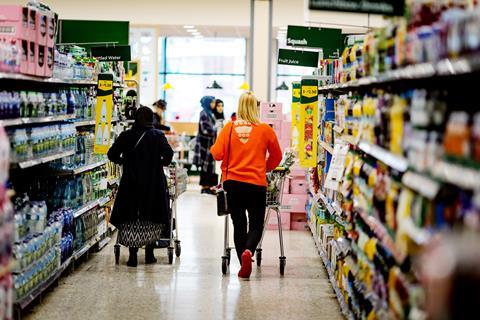
Isolated instances of recessionary behaviour aside – suppliers in some fresh categories are reporting an uptick in scratch cooking – shopper behaviour on the whole hasn’t changed.
Even own label, normally the first port of call in times of uncertainty, hasn’t seen much of a boost so far. While retailer lines are holding on to their volumes better than brands – they are down 0.6% in the Nielsen data to 23 November, against a 1.7% drop for branded sales – there’s little to suggest shoppers have started switching because of the uncertainty.
“There’s been uncertainty all year and it hasn’t fundamentally stopped us from shopping”
“So far, it has been hard to detect widespread changes in grocery shopping behaviour due to Brexit as most shoppers seem to be adopting a ‘wait and see’ approach,” says James Walton, chief economist at IGD.
That’s partly because food is in a good place compared with many other industries. Groceries are, ultimately, a necessary expense. Budget-conscious Brits may decide not to go on holiday, invest in a car or buy a new coat, but they still have to buy groceries. What’s more, the sector often benefits from consumers cutting back on discretionary spend elsewhere, such as going for a meal out.
“Food and drink is not a share-of-basket game, it’s a share-of-stomach game,” stresses Duncan Brewer, a partner at management consultancy Oliver Wyman. “As people shift away from casual dining, which is a relatively expensive way of getting calories, back towards traditional food and drink, it undoes some of the headwinds everyone is facing.”
Still, that’s only the top-line picture. At a category level, Brexit uncertainty has been making its mark – and some categories have been hit harder than others.
Meat takes a hit
Perhaps the most obvious casualty is meat. Three of the 10 fastest-falling products in this year’s Top Products are meat products, with beef, bacon and sausages all posting significant value and volume losses. Fresh meat lost a staggering £184.6m.
“The uncertainty surrounding Brexit has created a subdued market and reduced consumer confidence and this was a factor in decreased demand from UK consumers for popular red meat products such as beef steaks,” says a spokesman for beef giant ABP.
Some consumers have started trading down to cheaper cuts such as mince, he adds. “Our research is also telling us that families are using mince to make larger batches of meals such as bolognese for more than one occasion.”
But Brexit isn’t the only reason meat sales in the supermarkets have taken a hit this year – or, indeed, the main reason. The weather, health concerns, the rise of plant-based eating and continued growth in the discounters all played their part.
“Indulgent categories do well when consumer confidence dips. As a nation, when the going gets tough, we reach for the chocolate”
“Probably the biggest factor was the weather,” says David Swales, head of strategic insight at AHDB. “2018 was an exceptional year, with lots of really nice hot sunny weekends, which drove sales of barbecue meat. This year, we are seeing significant falls for these products.”
The picture is similarly multifaceted for some of this year’s top performers. Of course, the likes of confectionery, snacks and spirits are inherently well-positioned to appeal to Brexit-weary Brits looking for treats. As Ben Morrison, Nielsen’s head of commercial for grocery, puts it: “Indulgent categories do well when consumer confidence dips. As a nation, when the going gets tough, we reach for the chocolate.”
But suppliers in these categories have also made the most of that opportunity with eye-catching, on-trend NPD (think vegan Galaxy and reduced-sugar Cadbury Dairy Milk) and a strong focus on formats such as RTDs, sharing bags and multipacks.
Elsewhere, an emphasis on ethics, purpose and sustainability, as well as trends such as health and wellness, have helped retailers and suppliers dodge the quagmire of Brexit. “Some specific categories, such as vegan products, have looked immune from the uncertainty, maintaining strong growth,” says Anne Alexandre, retail sales monitor manager at the British Retail Consortium.
Plant-based boom
Indeed, meat-free was one of the 10 fastest-growing categories in 2019, racking up nearly £62m in extra sales thanks to a dizzying rate of NPD and growing consumer concern about the health and environmental impact of meat.
If shoppers tighten their belts further next year, plant-based growth could accelerate even more. That sounds counterintuitive, given the category relies on consumers foregoing familiar choices and experimenting with new ingredients, but it’s all about price points.
“We’re in an interesting race against time here,” says Brewer at Oliver Wyman. “If the more modern but expensive plant-based substitutes can get their price down below meat, then they will be at the right time to pick people up who are trading down from meat. If they can’t do that in time, then I think people will revert to cheaper actual meat.”
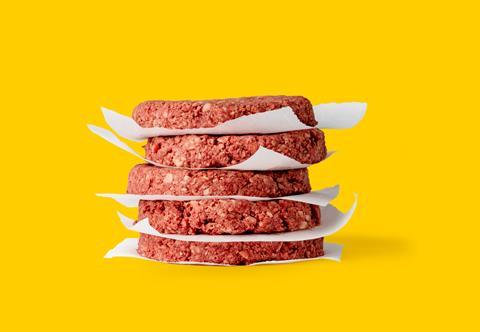
Such a direct link between uncertainty and category performance is the exception, though. In most cases, winners and losers continue to be separated by category-specific dynamics and the smarts of individual retailers and suppliers.
“There is no denying that Brexit uncertainty presents businesses with a challenge, but it isn’t the only driver carving out a new consumer landscape,” says Linda Ellett, UK head of consumer markets, leisure and retail at KPMG. “Winning businesses must therefore concentrate their efforts on controlling the controllable.”
Of course, controlling the controllable is a tall order right now. While 2019 has been a relatively steady year for shopper behaviour, it’s been anything but calm behind the scenes. Suppliers and retailers have been pedalling furiously to ensure their supply chains are robust enough to cope with a no-deal Brexit.
It’s a well-rehearsed but no-less-punishing drill at this point: mapping new routes in and out of the UK, shoring up ingredients supplies, stockpiling raw materials and finished goods where possible, putting aside financial reserves to cope with potential tariffs and hedging against currency fluctuations.
“Like any responsible business, we have been preparing for all possible scenarios,” says Scott Meredith, UK sales director at Lucozade Ribena Suntory. “This has included updating the labelling of all relevant drinks to ensure they can continue to be sold in their respective markets. We have plans in place to help protect us from increased tariffs and other costs. And, of course, we have been working closely with our customers to understand their requirements and have additional safety stocks in case of border delays or should customer demand increase beyond forecast.”
How the retailers stack up
On high alert
Close co-ordination has also been top of the agenda at Müller. “Alongside our internal Brexit preparations, we’ve been working closely with our customers, and supply chain, to facilitate any changes that might be required to meet the changing needs of the markets we serve,” says Bergen Merey, CEO of Müller Yogurt and Desserts.
Suppliers have no choice but to be on high alert. Consumer confidence in grocery may be robust right now, but it wouldn’t take much to shake it, warns Wright at the FDF.
“You’d only need one place to be bad, because of the power of social media,” he says. “If suddenly there are empty shelves – no berries available in Darlington – then that will translate instantly into everyone thinking berries are going to run out and buy them.”
It’s not just supply chains that are being reviewed in the current climate. Ingredient decks are getting the Brexit treatment too, as suppliers seek to mitigate higher costs by reducing their exposure to expensive raw materials.
“If suddenly there were no berries in Darlington, that will translate into everyone thinking berries are going to run out”
“A lot of butter has been removed,” says Ashley Pollock, assistant manager for innovation at consultancy Ayming. At the same time, efforts to take out palm oil have stalled, she adds, despite growing pressure on retailers and manufacturers to reduce their reliance on the fat.
“You also tend to take out natural ingredients, for example fruit extracts or fruit colours, and just put in artificial colours and ingredients. It’s much cheaper. At the moment, there just aren’t the margins to be commercially viable without looking to some of those options, unfortunately.”
Those tough margins are also taking their toll on innovation and R&D budgets. A recent report by Ayming found only 48% of UK businesses expected R&D budgets to increase in the next three years, compared with three quarters worldwide, with Brexit uncertainty a key factor.
Already, there are about 20% fewer new products coming to the market today than in 2016, according to Nielsen Bases, which tracks NPD.
That’s not just down to Brexit – there’s also been an industry-wide shift towards “fewer, better, bigger” innovations, explains Nielsen Bases VP Giles Watts. But delivering on the “better, bigger” part of that equation is proving tricky in the current climate.
The dearth of NPD
Genuinely transformational innovation is hard to come by, says Pollock. “All along the supply chain, the focus has been on practical fire-fighting instead of future-proofing their businesses.”
That means tweaking existing products and launching relatively safe NPD instead of betting the house on blue-sky thinking. “That pure innovation side of things is what’s been missing,” says Pollock. “That’s something Silicon Valley is really good at. In the UK, we’re seeing less of those exciting, completely new, eating experiences.”
Of course, that lack of innovation can wind up becoming a vicious circle. Take yoghurts & desserts, a category that’s lost £50.6m over the past year, partly because of a lack of NPD. Market leader Müller is now taking matters into its own hands.
“The yoghurt market has its challenges, so everything we’re doing is designed to increase our share of both the private label and branded yoghurt category, across grocery, convenience and foodservice channels,” says Merey.

This has involved pumping £50m into Müller’s yoghurt factory in Telford this year, expanding capacity to an additional 500 million pots a year and delivering “increased levels of innovation”.
ABP also insists it hasn’t shelved any innovation because of Brexit uncertainty, but it has adapted its NPD plans to respond to changing shopper needs. “For example, we are looking at added-value products to cater for batch cooking,” says the spokesman.
The fresh produce sector, meanwhile, has seen some surprisingly gutsy moves into automation despite the uncertainty. “Everyone is concerned about labour and that’s actually driven quite a lot of innovation in fresh produce,” says Duncan Rawson, a partner at consultancy EFFP. “People are investing.”
Such examples are few and far between, however. “Where there is an opportunity to be cautious, you are seeing manufacturers be cautious,” says Wright.
Caution is also the watch-word at the major supermarkets, which have applied this mantra to their ranging decisions. “Some retailers have reduced their product ranges to focus on an ‘everyday low price’ strategy, helping shoppers searching for value,” says Alexandre at the BRC.
Challengers face challenges
That has hit smaller brands especially hard. This time last year, challengers were enjoying an unusually receptive market, marked by the launch of the Sainsbury’s Future Brands initiative and other such incubator schemes.
These are still going. But as so many resources are tied up in Brexit planning, retailers are focusing on shoring up core growth and buyers are feeling less inclined to give challenger brands a chance, says Thea Alexander, co-founder of Young Foodies.
“It’s always really hard to speak to buyers, but there are now fewer buyers than there were this time last year,” she says. “And the space in their diary for discovery of new innovation has just been ripped out.”
Across the wider industry “it feels like, short term, the appetite for taking punts on challenger brands has disappeared”, Alexander adds.
Alternative routes to market, such as selling direct to consumers and exporting, are therefore becoming an urgent priority for smaller brands.
”The appetite for taking punts on challenger brands has disappeared”
“It’s perhaps counterintuitive to Brexit, but it comes from a desperation of ‘no one is answering my calls, I can’t get through to anyone’,” says Alexander. “Brands are having to think omnichannel from earlier on, rather than this default of wanting to get your products into a major retailer.”
To make matters worse, investors are feeling just as cautious, fuelling a spate of administrations and near-administrations among challenger brands in recent months. “We are seeing more brands looking for emergency capital than we’ve ever had, but investors are sitting on their hands,” says Alexander. “People aren’t looking to make big investment decisions right now until they understand how all this is going to settle.”
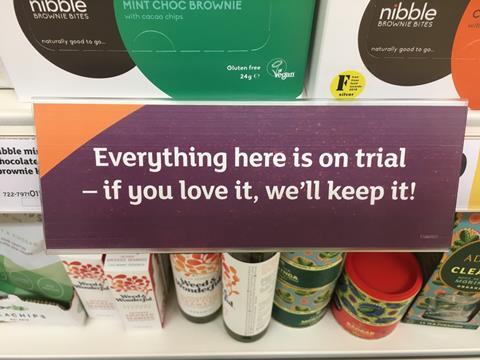
Investors aren’t alone in wanting to understand that. After three-and-a-half years of Brexit limbo, the entire grocery industry is desperate for certainty.
Top-line performance this year may have been better than expected, but that is little consolation for those who found themselves in heavily exposed categories, with much-diminished NPD budgets or at the receiving end of risk-averse buyers.
Even this year’s winners will be hungry for change. ‘Not a complete disaster’ is hardly a satisfactory state of affairs for UK grocery, and chronic under-investment in innovation and R&D will catch up with the sector down the line.
Still, there is reason for optimism, insists Watkins at Nielsen. “The food and drink industry remains very resilient to these sort of bigger challenges,” he says. “It’s very adaptable. Yes, things have been getting a bit tricky, but we haven’t really seen anything that’s come close to being a cliff edge.”
Breathing space
There’s also some respite (if not certainty) on the political front, as an immediate no-deal looks off the cards for now. “All the routes out of the political impasse point to an extension,” says Wright at the FDF. That doesn’t mean the industry can relax, but it does afford an opportunity to draw breath.
Indeed, some companies are already making a conscious decision to step back from the stresses and strains of reacting to everyspike in the Brexit news cycle.
“Last year, and early in the spring, businesses were doing a lot of work to understand what the different scenarios might be,” says Rawson at EFFP. “More recently, they’ve said: ‘We’ve got plans in place, whatever we’ve decided to do we’re doing it, whether it’s right or wrong. The plans are in place. We’re not going to change now.’”
It’s an understandable, if potentially risky, strategy. Grocery may have staged an unlikely escape in 2019, but the industry cannot afford to take its eyes off the Brexit ball. In this brittle trading environment, a few unexpected shocks to the system might just be all it takes to turn this year’s dips and blips into next year’s cliff edge.
Top 10 fastest-growing categories
Chocolate ▲ £183.5m
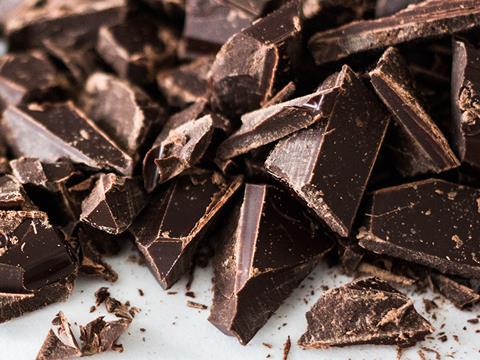
A glut of innovation was key to chocolate’s growth, with NPD tapping trends for dark variants, premium gifting formats, and healthier options.
Rolling tobacco ▲ £181.8m

As soaring taxation pushes up cigarette prices on a yearly basis, many of the UK’s remaining smokers are turning to roll-your-own for the best value.
Spirits ▲ £175.2m
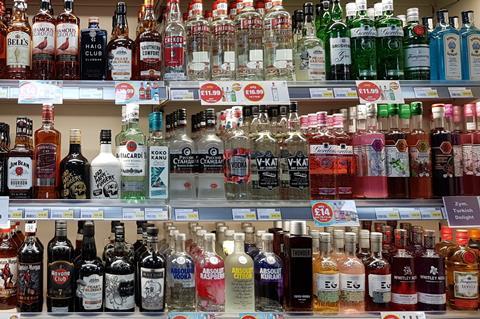
The rise of fruity gins such as Gordon’s Pink and Whitley Neill’s Rhubarb & Ginger has resulted in another stonking year for spirits.
Carbonates ▲ £164.1m

The sugar levy yet again proved a gift for fizzy pop. A combination of tax-related gains and stellar sales of low-sugar fare pushed up the category’s value.
Bagged snacks ▲ £134.1m
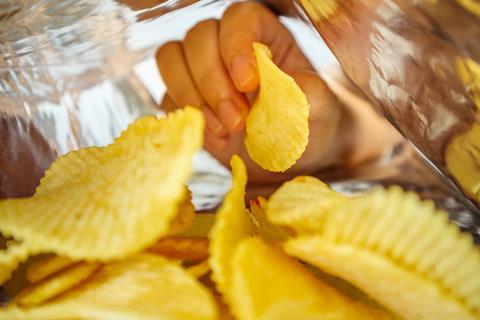
Gains in bagged snacks were largely down to the poor potato harvest, which pushed up crisp prices. Volumes remained relatively flat at 0.9%.
Free-from ▲ £122.3m

The free-from boom shows no sign of slowing. This year, dairy-free brands led the way as they capitalised on the vegan movement.
Sports and energy drinks ▲ £99.8m

The sugar levy is partly to thank for the gains in energy drinks. Brands have also been busy pumping out new flavours and low-sugar variants.
Lager ▲ £68.2m
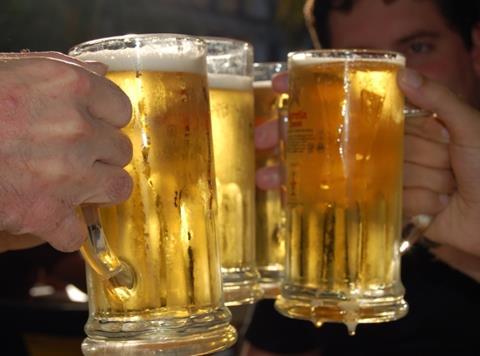
Given the tough comparables from last summer’s heatwave, you may expect lager to have fallen flat. But posh world lagers delivered a further boost to sales.
Meat-free ▲ £61.9m
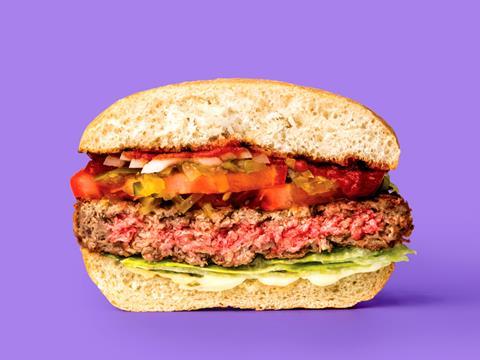
The flexitarian movement has resulted in another year of massive gains for meat-free. That was further bolstered by a blistering rate of innovation.
Vegetables ▲ £54.0m

Inflation was the main factor behind this £54m gain. Veg such as onions, broccoli and carrots posted large value gains despite relatively stable volumes.
Top 10 fastest-falling categories
Meat ▼ £184.6m
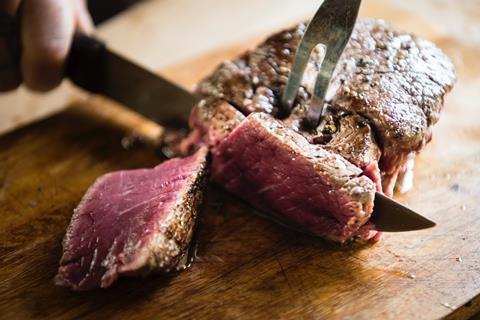
It’s not just the flexitarian trend hitting meat sales. The rise of the discounters (excluded from this data) and this year’s less BBQ-friendly summer also took a toll.
Cigarettes ▼ £158.0m

The rise of vaping and introduction of track & trace legislation compounded the woes of the declining cigarettes category this year.
Juices & smoothies ▼ £90.0m

Both branded and own label juices felt the pinch as talk around sugar content hit home. However, market leader Innocent gained £14.3m.
Cider ▼ £54.9m

This decline is more to do with tough comparables than poor sales. The hot summer of 2018, which lent itself to cider swilling, proved hard to beat.
Cosmetics ▼ £51.5m

Value is leaking out of the cosmetics category as consumers ditch the premium classics for a new generation of cheaper brands.
Yoghurt ▼ £50.6m
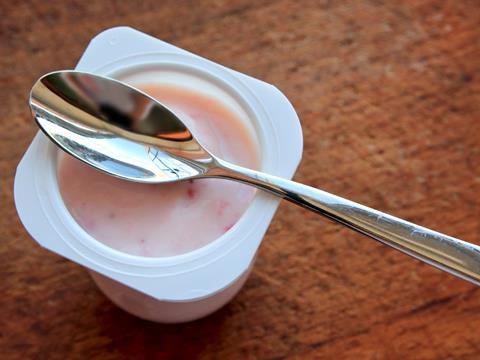
Yoghurt’s decline picked up pace this year as some Brits rejected it as a dessert option, and others turned their backs on diet-focused options such as fat-free.
Handheld ice cream ▼ £40.1m

No repeat of last summer’s heatwave was bound to have a deleterious effect on ice cream sales. The top 10 handheld brands lost £24.8m between them.
Bottled water ▼ £39.2m

Not only was the summer a letdown, a consumer backlash against single-use plastic also dampened sales of unflavoured water considerably.
Bread ▼ £37.5m
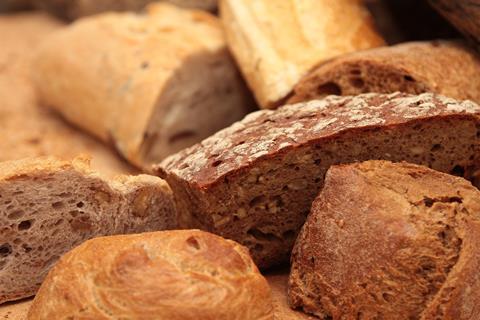
Brits are eating less bread, turning instead to other wrapped bakery options. And the biggest names are under increased pressure from cheaper own label fare.
Babymilk ▼ £32.0m
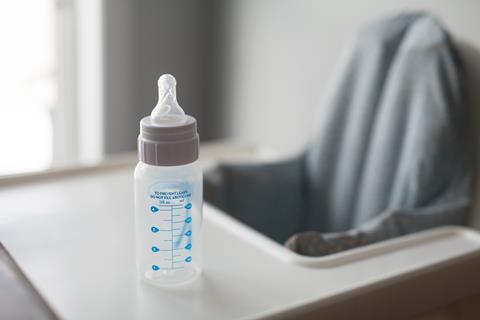
The birthrate in England and Wales is at an all-time low, breastfeeding is on the up, and parents are favouring own label over pricier brands.
Cautious brand extensions dominate NPD
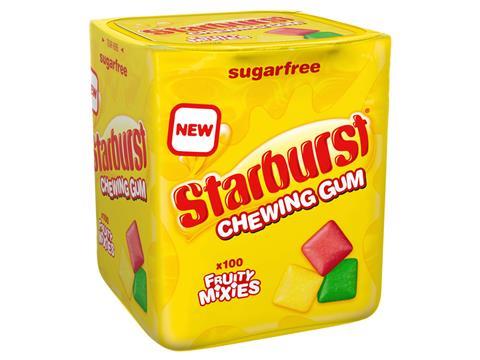
When times get tough, innovation tends to suffer. So the looming threat of Brexit isn’t a great climate for NPD. Indeed, a recent report by Ayming found only 48% of UK businesses expect R&D budgets to increase in the next three years. That compares with three quarters worldwide.
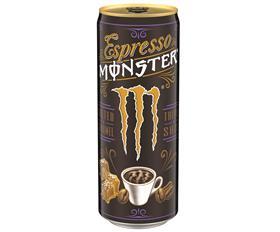
So a more cautious approach to innovation has taken hold of late: brand extensions. New products under a familiar name make up a large proportion of the fastest-growing SKUs under £10m in this year’s Top Products data.
CCEP has been particularly active on this front. Last year, it soft launched Monster Espresso in a bid to get to get in on the fast-growing iced coffee sector. The coffee drink is now widely available and worth £4.5m [Nielsen 52 w/e 7 September 2019].
Then in March, CCEP moved its flagship brand into the buzzing energy drinks category with the launch of Coke Energy. It has since racked up sales of £4.1m.
The tactic seems to be paying off for many of the big boys. Unilever has generated £5.9m by creating an ice cream version of its Kinder Bueno bar. Mars has bucked the decline in gum sales with Starburst gum, now worth £6m. And Lucozade has already generated £2.6m with Ribena Frusion flavoured water, which made its debut in February.
Chris Blythe, director of The Brand Nursery, says this approach is dictated by a “fair amount of general caution” in the food and drink industry. “Big brand owners appear to be getting smarter and are looking to diversify or spread risk by taking advantage of their brand credentials in new or emerging sectors,” he says.
The retailers are fuelling this caution, says Karen Green, director at Food Mentor. Rather than experimenting, they are sticking to ”safe options of brands they know and categories they know”, she explains.
The story of soft drinks in 2019 sponsored by Coca-Cola European Partners
To find out what’s been happening during this bumper year for fizzy pop, and to hear some predictions for 2020, we spoke to CCEP commercial activation director, Mark Cumming.
The story of beer and cider in 2019 sponsored by Heineken UK
Lager is one of the fastest-growing categories in grocery, according to our Top Products Survey, with value sales up £68.2m as consumers traded up to posh world beers. To find out what’s been happening in the beer & cider category this year, we spoke to Heineken category and shopper marketing director, Toby Lancaster
Methodology
● The Grocer’s Top Products Survey is sourced using data from Nielsen’s Scantrack service, which monitors weekly sales data from a nationwide network of EPoS checkout scanners and represents sales in grocery multiples, co-ops, multiple off-licences, independents, forecourts, convenience multiples and symbols, online grocery retailers and online fulfilment stores (‘dark stores’). Personal care, OTC and baby products also include chemists. Some category definitions are subject to change.
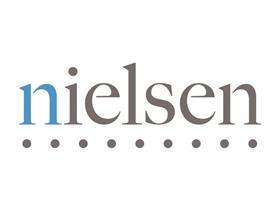
● All data is for 52 weeks to 7 September 2019. The fastest-growing products and categories are based on absolute value change.
● The Top Products Survey data was compiled by Nielsen exclusively for The Grocer magazine and William Reed Business Media. No reproduction of this list or data within, in full or in part, is permitted for commercial use without the prior consent of Nielsen.
Downloads
Top Products 2019
PDF, Size 310.24 mb

Julia frequently appears on radio and TV as a commentator on grocery retail and the politics of food and food sourcing, and has worked extensively on food authenticity and fraud issues. In 2013, she headed up The Grocer’s coverage of the horsemeat scandal.
Prior to joining The Grocer in 2010, Julia was editor of New Media Markets, a trade publication for the TV industry. She started her career as a staff writer for The Legal 500 at publisher Legalease. @juliaglotzView full Profile
Topics
The Grocer’s Top Products 2019: Brand on the run?
- 1
 Currently reading
Currently readingBrand on the run?
- 2
- 3
- 4
- 5
- 6
- 7
- 8
- 9
- 10
- 11
- 12
- 13
- 14
- 15
- 16
- 17
- 18
- 19
- 20
- 21
- 22
- 23
- 24
- 25
- 26
- 27
- 28
- 29
- 30
- 31
- 32
- 33
- 34
- 35
- 36
- 37
- 38
- 39
- 40
- 41
- 42
- 43
- 44
- 45
- 46
- 47
- 48
- 49



![XOXO-Product-Shot[ALL FLAVOUR]-Sky-1920x1080](https://dmrqkbkq8el9i.cloudfront.net/Pictures/274x183/4/9/2/355492_xoxoproductshotallflavoursky1920x1080_806584_crop.jpg)
























































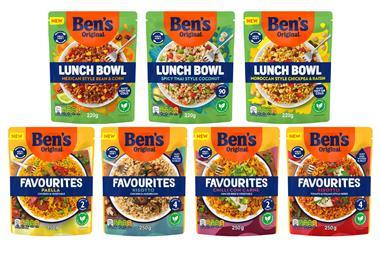











No comments yet